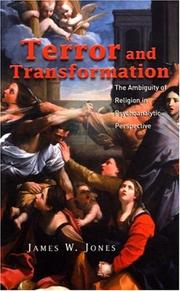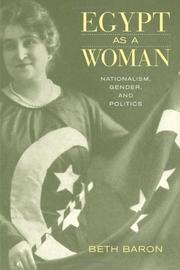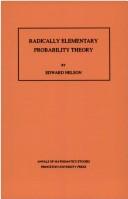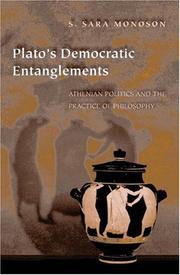| Listing 1 - 10 of 17 | << page >> |
Sort by
|

ISBN: 1317763033 1315800608 1317763041 9781317763031 9781315800608 1583911928 9781583911921 1583911936 9781583911938 9781317763024 9781317763048 Year: 2002 Publisher: New York
Abstract | Keywords | Export | Availability | Bookmark
 Loading...
Loading...Choose an application
- Reference Manager
- EndNote
- RefWorks (Direct export to RefWorks)
Religion has been responsible for both horrific acts against humanity and some of humanity's most sublime teachings and experiences. How is this possible? From a contemporary psychoanalytic perspective, this book seeks to answer that question in terms of the psychological dynamic of idealisation.At the heart of living religion is the idealisation of everyday objects. Such idealisations provide much of the transforming power of religious experience, which is one of the positive contributions of religion to the psychological life. However, idealisation can also lead to religious fanaticism w
Psychoanalysis and religion. --- Religion and psychoanalysis --- Religion --- psychoanalysis --- understanding religion --- psychologic dynamic of idealization --- religious experience --- religious fanatism
Multi
ISBN: 9781316510957 9781009039116 9781009018838 Year: 2022 Publisher: Cambridge Cambridge University Press
Abstract | Keywords | Export | Availability | Bookmark
 Loading...
Loading...Choose an application
- Reference Manager
- EndNote
- RefWorks (Direct export to RefWorks)
Iconography --- Environmental planning --- History of civilization --- urban history --- cities --- idealization --- Renaissance --- anno 1300-1399 --- anno 1400-1499 --- Florence
Book
ISBN: 9783422074224 Year: 2018 Publisher: Berlin Deutscher Kunstverlag
Abstract | Keywords | Export | Availability | Bookmark
 Loading...
Loading...Choose an application
- Reference Manager
- EndNote
- RefWorks (Direct export to RefWorks)
Drawing --- Painting --- drawing techniques --- drawing [image-making] --- painting [image-making] --- nudes [representations] --- idealization --- art schools [institutions] --- human figures [visual works] --- anno 1600-1699 --- anno 1700-1799 --- anno 1800-1899

ISBN: 1282069586 9786612069581 0226059901 9780226059907 9780226059723 0226059723 0226059723 0226059731 9780226059730 9781282069589 Year: 1991 Publisher: Chicago : University of Chicago Press,
Abstract | Keywords | Export | Availability | Bookmark
 Loading...
Loading...Choose an application
- Reference Manager
- EndNote
- RefWorks (Direct export to RefWorks)
Until now the advent of Western romantic love has been seen as a liberation from-or antidote to-ten centuries of misogyny. In this major contribution to gender studies, R. Howard Bloch demonstrates how similar the ubiquitous antifeminism of medieval times and the romantic idealization of woman actually are. Through analyses of a broad range of patristic and medieval texts, Bloch explores the Christian construction of gender in which the flesh is feminized, the feminine is aestheticized, and aesthetics are condemned in theological terms. Tracing the underlying theme of virginity from the Church Fathers to the courtly poets, Bloch establishes the continuity between early Christian antifeminism and the idealization of woman that emerged in the twelfth and thirteenth centuries. In conclusion he explains the likely social, economic, and legal causes for the seeming inversion of the terms of misogyny into those of an idealizing tradition of love that exists alongside its earlier avatar until the current era. This startling study will be of great value to students of medieval literature as well as to historians of culture and gender.
Love --- Misogyny --- Patriarchy --- Social history --- Women --- Androcracy --- Patriarchal families --- Fathers --- Families --- Male domination (Social structure) --- Patrilineal kinship --- Women-hating --- Misanthropy --- Sexual animosity --- History. --- History --- #GROL:MEDO-396'04/14' --- History of civilization --- anno 500-1499 --- Europe --- Femmes --- Histoire sociale --- Misogynie --- Patriarcat (Sociologie) --- Amour --- Histoire --- Middle Ages, 500-1500 --- romantic love, romance, misogyny, medieval, gender studies, feminism, women, idealization, purity, liberation, aesthetics, theology, virginity, feminine flesh, courtly, chivalry, church fathers, poets, middle ages, social history, nonfiction, literary theory, molestiae nuptiarum, yahwist creation, heiress, dowager, possessions, finance, economics, money, perfection, power, french lay, male indiscretion, infidelity, sexuality, monogamy.

ISBN: 0691044317 069121848X 0691094888 Year: 2002 Publisher: Princeton : Oxford : Princeton University Press,
Abstract | Keywords | Export | Availability | Bookmark
 Loading...
Loading...Choose an application
- Reference Manager
- EndNote
- RefWorks (Direct export to RefWorks)
In archaic and classical Greece, statues played a constant role in people's religious, political, economic, aesthetic, and mental lives. Evidence of many kinds demonstrates that ancient Greeks thought about--and interacted with--statues in ways very different from our own. This book recovers ancient thinking about statues by approaching them through contemporary literary sources. It not only shows that ancient viewers conceived of images as more operative than aesthetic, but additionally reveals how poets and philosophers found in sculpture a practice ''good to think with.'' Deborah Tarn Steiner considers how Greek authors used images to ponder the relation of a copy to an original and of external appearance to inner reality. For these writers, a sculpture could straddle life and death, encode desire, or occasion reflection on their own act of producing a text. Many of the same sources also reveal how thinking about statues was reflected in the objects' everyday treatment. Viewing representations of gods and heroes as vessels hosting a living force, worshippers ritually washed, clothed, and fed them in order to elicit the numinous presence within. By reading the plastic and verbal sources together, this book offers new insights into classical texts while illuminating the practices surrounding the design, manufacture, and deployment of ancient images. Its argument that images are properly objects of cultural and social--rather than purely aesthetic--study will attract art historians, cultural historians, and anthropologists, as well as classicists.
Statues in literature --- Statues dans la littérature --- Art et littérature --- Sculpture in literature. --- Sculpture, Greek, in literature. --- Statues in literature. --- Statues dans la littérature --- Art and literature --- Greek literature --- Statues --- History and criticism. --- Sculpture in literature --- Aesthetics, Ancient. --- Sculpture, Greek. --- Littérature grecque --- Art et littérature --- Sculpture dans la littérature --- Esthétique ancienne --- Sculpture grecque --- Histoire et critique --- Statuary --- Monuments --- Sculpture --- Literature and art --- Literature and painting --- Literature and sculpture --- Painting and literature --- Sculpture and literature --- Aesthetics --- Literature --- Achilles. --- Admetus. --- Alcibiades. --- Daidalos. --- Dionysus. --- Gorgias. --- Gorgon. --- Harmodios and Aristogeiton. --- Helen. --- Hephaistos. --- Hermes. --- Kronos. --- Leagros. --- Lucian. --- Lykosura. --- Menelaus. --- Nike. --- Niobe. --- Odysseus. --- Pandora. --- Pelops. --- Pindar. --- Socrates. --- athletic images. --- base, of statue. --- blindness. --- chariot race. --- charis. --- civic life. --- cult images. --- daidalon. --- eikones. --- eros. --- facture. --- festivals. --- funerary monuments. --- homosocial relations. --- idealization. --- immobility. --- ivory. --- korai. --- mirror image. --- mobility. --- realism. --- summetria. --- Standbeelden. --- Plastische kunst. --- Interactie. --- Griekse oudheid. --- Bellettrie. --- Beeldvorming.

ISBN: 1282360272 9786612360275 1423714873 0520940814 1598755277 9780520940819 9781423714873 9781598755275 9781282360273 0520238575 9780520238572 6612360275 Year: 2005 Publisher: Berkeley University of California Press
Abstract | Keywords | Export | Availability | Bookmark
 Loading...
Loading...Choose an application
- Reference Manager
- EndNote
- RefWorks (Direct export to RefWorks)
This original and historically rich book examines the influence of gender in shaping the Egyptian nation from the nineteenth century through the revolution of 1919 and into the 1940's. In Egypt as a Woman, Beth Baron divides her narrative into two strands: the first analyzes the gendered language and images of the nation, and the second considers the political activities of women nationalists. She shows that, even though women were largely excluded from participation in the state, the visual imagery of nationalism was replete with female figures. Baron juxtaposes the idealization of the family and the feminine in nationalist rhetoric with transformations in elite households and the work of women activists striving for national independence.
Feminism --- Nationalism --- Gender identity --- Women --- Emancipation of women --- Feminist movement --- Women's lib --- Women's liberation --- Women's liberation movement --- Women's movement --- Social movements --- Anti-feminism --- Sex identity (Gender identity) --- Sexual identity (Gender identity) --- Identity (Psychology) --- Sex (Psychology) --- Queer theory --- Human females --- Wimmin --- Woman --- Womon --- Womyn --- Females --- Human beings --- Femininity --- Political activity --- Emancipation --- Egypt --- Politics and government. --- Political activity. --- Women -- Egypt -- Political activity.. --- Women -- Middle East.. --- Gender identity -- Egypt.. --- Nationalism -- Egypt.. --- Feminism -- Egypt.. --- Egypt -- Politics and government. --- Gender dysphoria --- 19th century egyptian culture. --- 20th century egyptian culture. --- british occupation. --- egypt. --- egyptian honor. --- egyptian nation. --- egyptian nationalism. --- egyptian revolution of 1919. --- egyptian revolution. --- ethnicity. --- family. --- female figures. --- feminine. --- gender studies. --- gender. --- gendered images. --- gendered language. --- history. --- idealization of the family. --- islam. --- islamic activists. --- national independence. --- nationalism. --- nationalist iconography. --- political. --- politics. --- religion. --- slavery. --- the wafd. --- wafd party. --- women activists. --- women nationalists.
Book
ISBN: 9780691240213 Year: 2022 Publisher: Princeton, NJ
Abstract | Keywords | Export | Availability | Bookmark
 Loading...
Loading...Choose an application
- Reference Manager
- EndNote
- RefWorks (Direct export to RefWorks)
Nose reconstructions have been common in India for centuries. South Korea, Brazil, and Israel have become international centers for procedures ranging from eyelid restructuring to buttock lifts and tummy tucks. Argentina has the highest rate of silicone implants in the world. Around the globe, aesthetic surgery has become a cultural and medical fixture. Sander Gilman seeks to explain why by presenting the first systematic world history and cultural theory of aesthetic surgery. Touching on subjects as diverse as getting a "nose job" as a sweet-sixteen birthday present and the removal of male breasts in seventh-century Alexandria, Gilman argues that aesthetic surgery has such universal appeal because it helps people to "pass," to be seen as a member of a group with which they want to or need to identify. Gilman begins by addressing basic questions about the history of aesthetic surgery. What surgical procedures have been performed? Which are considered aesthetic and why? Who are the patients? What is the place of aesthetic surgery in modern culture? He then turns his attention to that focus of countless human anxieties: the nose. Gilman discusses how people have reshaped their noses to repair the ravages of war and disease (principally syphilis), to match prevailing ideas of beauty, and to avoid association with negative images of the "Jew," the "Irish," the "Oriental," or the "Black." He examines how we have used aesthetic surgery on almost every conceivable part of the body to try to pass as younger, stronger, thinner, and more erotic. Gilman also explores some of the extremes of surgery as personal transformation, discussing transgender surgery, adult circumcision and foreskin restoration, the enhancement of dueling scars, and even a performance artist who had herself altered to resemble the Mona Lisa. The book draws on an extraordinary range of sources. Gilman is as comfortable discussing Nietzsche, Yeats, and Darwin as he is grisly medical details, Michael Jackson, and Barbra Streisand's decision to keep her own nose. The book contains dozens of arresting images of people before, during, and after surgery. This is a profound, provocative, and engaging study of how humans have sought to change their lives by transforming their bodies.
Body image --- Surgery, Plastic --- Social aspects. --- Complications. --- Complications and sequelae --- Admiration. --- Aesthetics. --- African Americans. --- Analogy. --- Anecdote. --- Anesthesia. --- Antiseptic. --- Attractiveness. --- Ayurveda. --- Beauty. --- Body image. --- Bra size. --- Brachioplasty. --- Breast. --- Buttock augmentation. --- Buttocks. --- Caricature. --- Cartilage. --- Centrality. --- Cheek. --- Chin augmentation. --- Cleanliness. --- Clothespin. --- Clothing. --- Cosmetics. --- Credential. --- Credentialing. --- Cultural capital. --- Culture of India. --- Direct experience. --- Disease. --- Earlobe. --- Efficacy. --- Eloquence. --- Enthusiasm. --- Evocation. --- Excess skin. --- Face powder. --- Face. --- Family income. --- Female. --- Foreskin restoration. --- Foreskin. --- Granulation tissue. --- Greatness. --- Hair transplantation. --- Hairstyle. --- Health professional. --- High Art. --- High Renaissance. --- Human nose. --- Human physical appearance. --- Human skin color. --- Human spirit. --- Human tooth. --- Humanism. --- Humorism. --- Humour. --- Hygiene. --- I Wish (manhwa). --- Idealization. --- Invention. --- Keloid. --- Kiss. --- Lighting. --- Local anesthesia. --- Lorenz Oken. --- Middle class. --- Modernity. --- Moral imperative. --- Narrative. --- Parody. --- Peaceful coexistence. --- Penis. --- Physical attractiveness. --- Physician. --- Plastic surgery. --- Popularity. --- Positive liberty. --- Projective identification. --- Real Body. --- Recreation. --- Scalp. --- Scholasticism. --- Self-consciousness. --- Sensibility. --- Seriousness. --- Sincerity. --- Social order. --- Social reality. --- Social status. --- Sophistication. --- Superficiality. --- Swaddling. --- Syphilis. --- The Human Face. --- The Mask. --- Theory of justification. --- Thigh. --- Understanding.
Book
ISBN: 9780691174679 0691174679 1784025429 1400850444 0691140014 1306129508 Year: 2014 Publisher: Princeton: Princeton university press,
Abstract | Keywords | Export | Availability | Bookmark
 Loading...
Loading...Choose an application
- Reference Manager
- EndNote
- RefWorks (Direct export to RefWorks)
This is a concise, comprehensive, and accessible introduction to the philosophy of biology written by a leading authority on the subject. Geared to philosophers, biologists, and students of both, the book provides sophisticated and innovative coverage of the central topics and many of the latest developments in the field. Emphasizing connections between biological theories and other areas of philosophy, and carefully explaining both philosophical and biological terms, Peter Godfrey-Smith discusses the relation between philosophy and science; examines the role of laws, mechanistic explanation, and idealized models in biological theories; describes evolution by natural selection; and assesses attempts to extend Darwin’s mechanism to explain changes in ideas, culture, and other phenomena. Further topics include functions and teleology, individuality and organisms, species, the tree of life, and human nature. The book closes with detailed, cutting-edge treatments of the evolution of cooperation, of information in biology, and of the role of communication in living systems at all scales. Authoritative and up-to-date, this is an essential guide for anyone interested in the important philosophical issues raised by the biological sciences.
Biology --- Philosophy --- Biology - Philosophy --- Vitalism --- Philosophy. --- Allele. --- Altruism. --- Ambiguity. --- Asexual reproduction. --- Bacteria. --- Behavior. --- Ben Kerr. --- Biological Theory (journal). --- Biologist. --- Biology. --- Causality. --- Cell biology. --- Cell division. --- Ceteris paribus. --- Charles Darwin. --- Chromosome. --- Cistron. --- Cladistics. --- Common descent. --- Computation. --- Cooperation. --- Copying. --- Darwinism. --- Derek. --- Developmental biology. --- Ecology. --- Elliott Sober. --- Emergence. --- Eukaryote. --- Evolution of the eye. --- Evolution. --- Evolutionary biology. --- Evolutionary game theory. --- Explanation. --- Fitness (biology). --- Further (bus). --- Gene Frequency. --- Gene expression. --- Gene pool. --- Gene product. --- Gene. --- Genotype. --- Gregor Mendel. --- Harvard University. --- Idealization. --- Interactor. --- John Maynard Smith. --- Kim Sterelny. --- Kin selection. --- Kleiber's law. --- Kritika (journal). --- Marc Ereshefsky. --- Mating. --- Mendelian inheritance. --- Metabolism. --- Model organism. --- Molecular biology. --- Molecule. --- Multicellular organism. --- Natural selection. --- Nucleic acid sequence. --- Nucleotide. --- On the Origin of Species. --- Organism. --- Phenotype. --- Phenotypic plasticity. --- Philosopher. --- Philosophy of biology. --- Philosophy of science. --- Phylogenetics. --- Phylum. --- Physical law. --- Plant breeding. --- Prisoner's dilemma. --- Probability. --- Protein. --- RNA. --- Regulation of gene expression. --- Reproduction. --- Reproductive success. --- Result. --- Ribosome. --- Richard Dawkins. --- Scientist. --- Sexual reproduction. --- Single-nucleotide polymorphism. --- Skillings. --- Species. --- Spontaneous generation. --- Stanford University. --- Student (magazine). --- The Philosopher. --- Theory. --- Trade-off. --- Trait theory. --- Unit of selection. --- Universal Darwinism. --- Weisberg. --- Willi Hennig. --- Writing.

ISBN: 0691084734 0691084742 1400882141 Year: 1987 Publisher: Princeton Princeton University Press
Abstract | Keywords | Export | Availability | Bookmark
 Loading...
Loading...Choose an application
- Reference Manager
- EndNote
- RefWorks (Direct export to RefWorks)
Using only the very elementary framework of finite probability spaces, this book treats a number of topics in the modern theory of stochastic processes. This is made possible by using a small amount of Abraham Robinson's nonstandard analysis and not attempting to convert the results into conventional form.
Martingales (Mathematics) --- Stochastic processes. --- Probabilities. --- Martingales (Mathematics). --- Stochastic processes --- Probability --- Statistical inference --- Combinations --- Mathematics --- Chance --- Least squares --- Mathematical statistics --- Risk --- Random processes --- Probabilities --- Abraham Robinson. --- Absolute value. --- Addition. --- Algebra of random variables. --- Almost surely. --- Axiom. --- Axiomatic system. --- Borel set. --- Bounded function. --- Cantor's diagonal argument. --- Cardinality. --- Cartesian product. --- Central limit theorem. --- Chebyshev's inequality. --- Compact space. --- Contradiction. --- Convergence of random variables. --- Corollary. --- Correlation coefficient. --- Counterexample. --- Dimension (vector space). --- Dimension. --- Division by zero. --- Elementary function. --- Estimation. --- Existential quantification. --- Family of sets. --- Finite set. --- Hyperplane. --- Idealization. --- Independence (probability theory). --- Indicator function. --- Infinitesimal. --- Internal set theory. --- Joint probability distribution. --- Law of large numbers. --- Linear function. --- Martingale (probability theory). --- Mathematical induction. --- Mathematician. --- Mathematics. --- Measure (mathematics). --- N0. --- Natural number. --- Non-standard analysis. --- Norm (mathematics). --- Orthogonal complement. --- Parameter. --- Path space. --- Predictable process. --- Probability distribution. --- Probability measure. --- Probability space. --- Probability theory. --- Probability. --- Product topology. --- Projection (linear algebra). --- Quadratic variation. --- Random variable. --- Real number. --- Requirement. --- Scientific notation. --- Sequence. --- Set (mathematics). --- Significant figures. --- Special case. --- Standard deviation. --- Statistical mechanics. --- Stochastic process. --- Subalgebra. --- Subset. --- Summation. --- Theorem. --- Theory. --- Total variation. --- Transfer principle. --- Transfinite number. --- Trigonometric functions. --- Upper and lower bounds. --- Variable (mathematics). --- Variance. --- Vector space. --- W0. --- Wiener process. --- Without loss of generality.

ISBN: 0691043663 0691158584 9786612767128 1400823749 1282767127 1400812720 9781400812721 9781282767126 9781400823741 9780691043661 1400805473 9781400805471 Year: 2000 Publisher: Princeton, N.J. Princeton University Press
Abstract | Keywords | Export | Availability | Bookmark
 Loading...
Loading...Choose an application
- Reference Manager
- EndNote
- RefWorks (Direct export to RefWorks)
In this book, Sara Monoson challenges the longstanding and widely held view that Plato is a virulent opponent of all things democratic. She does not, however, offer in its place the equally mistaken idea that he is somehow a partisan of democracy. Instead, she argues that we should attend more closely to Plato's suggestion that democracy is horrifying and exciting, and she seeks to explain why he found it morally and politically intriguing. Monoson focuses on Plato's engagement with democracy as he knew it: a cluster of cultural practices that reach into private and public life, as well as a set of governing institutions. She proposes that while Plato charts tensions between the claims of democratic legitimacy and philosophical truth, he also exhibits a striking attraction to four practices central to Athenian democratic politics: intense antityrantism, frank speaking, public funeral oratory, and theater-going. By juxtaposing detailed examination of these aspects of Athenian democracy with analysis of the figurative language, dramatic structure, and arguments of the dialogues, she shows that Plato systematically links democratic ideals and activities to philosophic labor. Monoson finds that Plato's political thought exposes intimate connections between Athenian democratic politics and the practice of philosophy. Situating Plato's political thought in the context of the Athenian democratic imaginary, Monoson develops a new, textured way of thinking of the relationship between Plato's thought and the politics of his city.
Democracy --- History --- Plato --- Views on democracy --- -Self-government --- Political science --- Equality --- Representative government and representation --- Republics --- -Aflāṭūn --- Aplaton --- Bolatu --- Platon, --- Platonas --- Platone --- Po-la-tʻu --- Pʻŭllatʻo --- Pʻŭllatʻon --- Pʻuratʻon --- Πλάτων --- אפלטון --- פלאטא --- פלאטאן --- פלאטו --- أفلاطون --- 柏拉圖 --- 플라톤 --- History. --- Views on democracy. --- Self-government --- Aflāṭūn --- Plato. --- Platon --- Platoon --- Платон --- プラトン --- Democracy - Greece - Athens - History --- Plato - Views on democracy --- Aeschylus. --- Against Timarchus. --- Allan Bloom. --- Allegory of the Cave. --- Allusion. --- Ancient Greece. --- Aristotle. --- Athenian Democracy. --- Bribery. --- Callicles. --- Cambridge University Press. --- Citizenship. --- Classical Athens. --- Constitution of the Athenians. --- Critias (dialogue). --- Critias. --- Criticism of democracy. --- Criticism. --- Critique. --- Deliberation. --- Democracy. --- Democratic ideals. --- Demosthenes. --- Ethics. --- Ethos. --- Euripides. --- Exclusion. --- Explanation. --- Fifth-century Athens. --- Funeral oration (ancient Greece). --- Glaucon. --- Gorgias (dialogue). --- Gorgias. --- Greatness. --- Greek tragedy. --- Harmodius and Aristogeiton (sculpture). --- Harmodius and Aristogeiton. --- Herodotus. --- Idealization. --- Ideology. --- Imagery. --- Institution. --- Isocrates. --- Isonomia. --- Josiah Ober. --- Literature. --- Martha Nussbaum. --- Masculinity. --- Menexenus (dialogue). --- Metaphor. --- Metic. --- Multitude. --- Narrative. --- Oligarchy. --- One Hundred Years of Homosexuality. --- Oxford University Press. --- Parrhesia. --- Pederasty in ancient Greece. --- Pericles' Funeral Oration. --- Pericles. --- Phaedrus (dialogue). --- Philosopher. --- Philosophy. --- Pierre Vidal-Naquet. --- Platonic Academy. --- Political dissent. --- Political philosophy. --- Political science. --- Politics. --- Princeton University Press. --- Protagoras. --- Reason. --- Republic (Plato). --- Rhetoric. --- SAGE Publications. --- Self-image. --- Sheldon Wolin. --- Slavery. --- Socratic dialogue. --- Socratic. --- Sophist. --- Sophistication. --- Suggestion. --- The Erotic. --- The Other Hand. --- The Philosopher. --- Theatre of Dionysus. --- Themistocles. --- Theory. --- Thomas Pangle. --- Thought. --- Thucydides. --- Tragedy. --- Tyrannicide. --- Tyrant. --- Voting. --- Wealth. --- Writing. --- Yale University Press.
| Listing 1 - 10 of 17 | << page >> |
Sort by
|

 Search
Search Feedback
Feedback About UniCat
About UniCat  Help
Help News
News